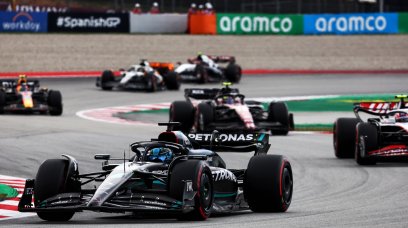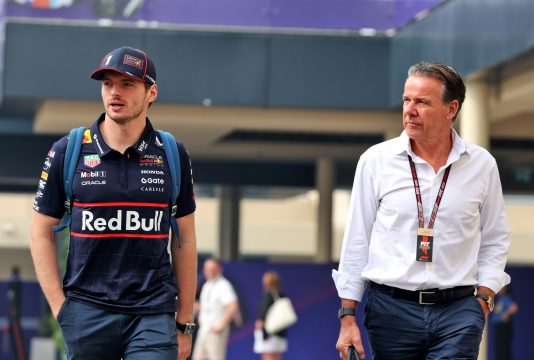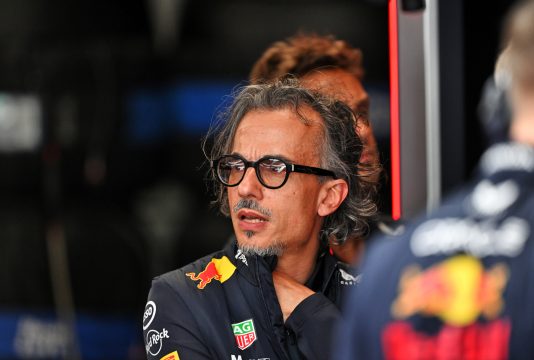It's fair to say that the novelty of street circuits is wearing off for Formula 1 fans, judging by the reaction to the latest track announcement in the destination city of Madrid.
The groans of "not another street circuit" coupled with anger over it potentially replacing a perminant venue were well met, but F1 did something slightly different when announcing the Ifema Madrid track.
It referred to it as a "hybrid" circuit, around 1.5km of it is dedicated to public roads while the rest of the 5.4km track will be purpose built.
While this is not anything unique in F1, given that venues such as Singapore have featured a mix of perminant and public road sections, the main difference is the ratio between those two. Madrid goes beyond just having a dedicated section for the pit and paddock.
To help develop the track design, F1 has turned to Italian architects Dromo who previously helped with the reprofiling of other tracks such as Zandvoort. Founder and CEO, Jarno Zaffelli, believes this is main distinction that seperates the two concepts.
"Don't look at this as a street circuit that is designed like Singapore," says Zaffelli speaking to RacingNews365.
"Singapore is taking the existing roads and geometries. Here [Madrid], we have a circuit that is in a normal environment, but it's not using much of the existing road. This is what's making the difference between the street circuit."
Viewed by others:
Maintaining the spectacle
One of the main criticisms of street tracks is their inability to show off the qualities of the cars, especially with their increased reliance on ground effects to keep them close and provide speed through corners.
When the Madrid track comes onto the calendar in 2026, F1 will have introduced a new set of engine and chassis design regulations. Much of the design work is tailored towards exploting the limits of these cars to retain that spectacle.
"What we are trying to do at this moment is to build a track where the 2026 cars will arrive at their limits," explains Zaffelli.
"In the past the tracks were much, much stronger than the cars. They were breaking on the the original tracks, just because the cars were not lasting and only doing some laps. Today that is impossible. There is quality and there is reliability, that is the best that we have ever had.
"The only thing that we can do is understand the limits of the car today, because they are designed for the tracks of today, and give them a track that is just pushing that limit."
The drivers will start the lap by negotiating a chicane, with it offering around four overtaking spots due to it measuring between 12 and 15 metres wide. From there they will build up to top speeds of over 300kph through a curve acceleration area into Turn 5.
The most destincitve part of the track will likely be on the run below the M11 motorway and into the Valdebebas purpose-built section, where they will arrive at Turn 10 right-hander that will banked.
"We took the inspiration from the comments of the drivers at all the other circuits to understand what they are liking," says Zaffelli.
"For example, we don't have hairpins and we have all medium-to-fast corners, very fast sequences, and bankings because after Zandvoort they [drivers] said 'We would like to see more of these kinds of corners in a new circuit'."
The banking has an added bonus of enabling fans to get closer to the action, something that is difficut to achieve with normal layouts due to the runoff requirements.
"Having a banking enables you to have a lot of people that are looking at the cars near to the track, because in a banking you don't have a runoff. If you see the layout, where we have the grandstands, they never have a runoff," he explained.
"So we were trying to do this 'cosy effect' of a stadium with all the people together like we have in Zandvoort. With a different scale because Madrid is bigger than Zandvoort."
Sustainability is key
Much of the talk surrounding the announcement was down to the tracks sustainabiltiy credentials, with 90% of fans expected to travel by public transport.
This extends to the design of the pit and paddock complexs which will be used by the teams and hospitality.
"Definetly to have the business model and the sustainability, we had to not destroy [existing] buildings, but refurbish the existing buildings instead of creating a new permanent pit building," says Zaffelli.
Given the hybrid design, it will also mean minimal disruption to locals and the scheduling as was found out at the Las Vegas race last year.
"We tried to reduce as much as possible to use of public road. In the beginning we had a layout with like almost 4km of public roads, we reduced it to 1.5km to give less issues to the population and the people that are outside of the facility."
Madrid's track looks like a genuine effort to break away from the traditional norms of a street track and create a facility that can show off the best F1 has to offer. Only time will tell whether that is enough to provide the wheel-to-wheel spectacle fans have come to expect from F1 in recent years.
Don't miss out on any of the Formula 1 action thanks to this handy 2026 F1 calendar that can be easily loaded into your smartphone or PC.
Download the calenderMost read
In this article
Interviews RN365 News dossier


























Join the conversation!